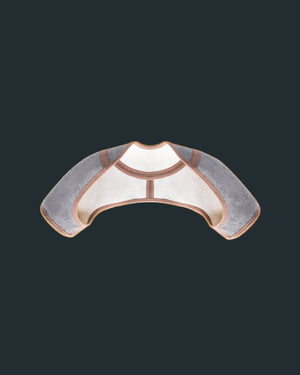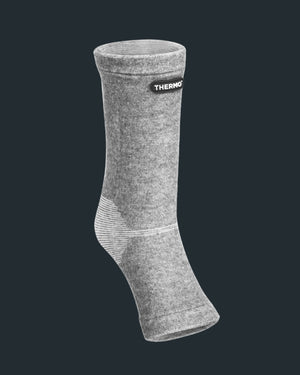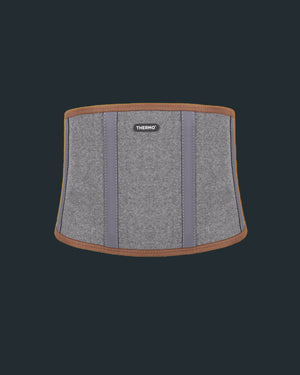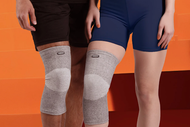Tennis elbow (lateral epicondylitis) is a condition that results from the overuse of the muscles and tendons in and around the elbow. It’s usually, though not excl...
Tennis elbow (lateral epicondylitis) is a condition that results from the overuse of the muscles and tendons in and around the elbow. It’s usually, though not exclusively, associated with sports like tennis—hence its name. When tendons are affected by tennis elbow, they can swell, bending the wrist back away from the palm and leading to pain and discomfort around the elbow.
Due to its persistence—its symptoms can last up to two years—tennis elbow can present a major issue, especially for people who are physically active and regularly strain their elbows.
To help, we’ve collected the best tennis elbow exercises targeted specifically at helping you treat tennis elbow, alleviate the symptoms, and speed up recovery.
Why Is It Necessary to Treat Tennis Elbow With Targeted Exercises?
Tennis elbow causes mild yet persistent pain. In many cases, it’s more than a mere annoyance. The condition can also reduce the strength of the forearm muscles as well as restrict the mobility of tendons in the elbow region. This makes daily activities much harder, so it affects a person’s life even outside of sports and exercise.
Leaving tennis elbow untreated, or sticking solely to conservative methods such as rest and applying ice packs, may prolong the symptoms. A lack of treatment may also cause the condition to intensify, leading to more severe and long-lasting pain and discomfort.
An appropriate exercise program can help to reduce the symptoms and accelerate recovery.
The 8 Best Exercises for Tennis Elbow Treatment
This assortment of light physical exertions, primarily stretching exercises in combination with gentle strengthening exercises, is designed to help treat tennis elbow by stimulating and strengthening the affected forearm muscles.

We recommend that you consult with your physical therapist before proceeding with the exercises, both as a safety precaution and as a way to receive a more personalized treatment plan.
1. Finger Stretch
The muscle and tendon inflammation caused by tennis elbow can extend through the entire forearm, all the way to your hands and fingers. For your fingers, this can manifest as stiffness, along with mild yet persistent pain.
Due to this, your tennis elbow treatment plan should include exercises targeting your finger muscles. For this particular exercise, you will need an elastic rubber or latex band.
To perform this finger exercise:
- Take the elastic band and place it around your fingers.
- Cup your hand slightly.
- Gently spread your fingers apart, then move them back together.
- Repeat the exercise 10 times for each hand.
2. Hand Grip
Tennis elbow can negatively affect your grip strength, making it uncomfortable to complete even certain basic everyday activities.
Grip strength exercises can help to remedy this problem. These exercises require an object that you can squeeze, such as a tennis ball, a therapy putty, a small rubber ball, or any other round object that bends somewhat under pressure.
To perform this grip strength exercise, you need to:
- Take the ball in your hand.
- Form a fist by gripping the ball with your fingers.
- Squeeze it for 10 seconds straight.
- Repeat 10 times for both hands.
3. Towel Twist
Similar to the above grip-strengthening exercise, towel twists are also designed to improve your grip strength. However, the twisting motions stimulate your wrist extensor muscles too. These are the muscles that move the back of your hand towards your forearm.
To do towel twists, you will need a small, rolled-up towel:
- Sit in a chair, with your shoulders relaxed, and hold the towel in both hands.
- Twist the towel on both ends in opposite directions as if you’re wringing water out of it.
- Repeat this exercise 10 times, then another 10 times by twisting the towel in the opposite direction.
4. Wrist Turn
A wrist turn is a light exercise that stimulates wrist and forearm muscles, which are also affected by tennis elbow. It helps to improve the forearm’s overall mobility, relieving the stiffness often associated with the condition.
There are two variants to this exercise: with and without light weights of 1-3 lbs. You may decide to use either variant, or you can start without weights and then add them later, once the exercise is easy without them.
To perform wrist turns:
- Slowly bend your elbow at a roughly 90-degree angle.
- Extend your hand outwards, with the palm facing up. If using a weight, hold it in your hand.
- Twist your wrist slowly so the palm ends up facing down.
- Hold the palm in this position for 5 seconds, and then slowly release it.
- Repeat this exercise 30 times in total.
5. Wrist Extension Stretch
Wrist extensors are the muscles you use whenever bending your wrist, which makes them particularly vulnerable to overuse. As such, their stiffness is one of the main symptoms of tennis elbow.

Wrist extension stretches are an efficient method of relieving this stiffness and recovering your wrist extensors’ mobility.
To do these stretches:
- Raise your arm straight out in front of your body and keep it there.
- Hold your palm facing the front.
- Apply gentle pressure to your stretching hand across the palm using your other hand, bringing the back of the hand towards your body.
- Pull the hand towards your body until you start feeling a stretch on the inside of your forearm and up into your palm.
- Hold your hand for 15 to 30 seconds in this position.
- Repeat 5 times for each arm.
6. Wrist Flexion Stretch
Wrist flexors are a group of muscles that are placed opposite the wrist extensors and have opposite actions.
These muscles bend the wrist, bringing the palm closer to the forearm. Tennis elbow puts the same amount of strain on them as it does on the extensors, requiring similar mobility exercises to relieve the symptoms.
To perform wrist flexion stretches:
- Raise your arm straight out in front of your body and hold it in position.
- Hold your palm so it faces down, then start slowly bending your wrist downwards, so that your palm moves towards your forearm.
- Apply gentle pressure to your stretching hand across the back of the hand, using your other hand.
- Push the hand towards your body until you start feeling a stretch on the back of your forearm and into the back of your hand.
- Hold your hand for 15 to 30 seconds in this position.
- Repeat 5 times for both arms.
7. Wrist Strengthening
These exercises strengthen your wrist muscles. This helps to make them more resistant to pressure that’s put upon them during recovery, lessening the chances of further harm. Since the goal is to simulate the full range of motion of your forearm’s muscles, the wrist strengthening exercise should be performed in two variants: palm up and palm down.
The intensity of this exercise increases with progress. Start with no weight. You’ll progress through 1 lb, 2 lb, and 3 lb weights. After completing two consecutive days of doing the exercises with no increase in pain after your session, increase the weight by 1 lb.
The four stages are:
- No weights; place your forearm on a table, with your wrist positioned at the edge and your elbow bent at 90 degrees.
- Use 1-lb weights; keep your forearm on a table and elbow bent at 90 degrees.
- Use 2-lb weights; slightly straighten your elbow so your forearms are more in line with your upper arms, but keep your forearms on a table.
- Use 3-lb weights; keep your arm straight out in front of you and in the air.
A wrist strengthening exercise requires you to:
- Start with your palm facing toward the floor.
- Bend your wrist so that your palm comes towards your forearm, as far as you can. Hold for 1 second.
- Pull the wrist back in the opposite direction and hold for 3 seconds.
- Repeat this 30 times for each arm.
- Repeat this entire series with the palm facing towards the ceiling.
8. Forearm Strengthening
Rotations of the forearm are known as supination and pronation. Exercises that strengthen the muscles that perform these actions are relatively similar to wrist-strengthening exercises in many ways. They’re also performed with weights in 1-lb stages, and you should increase the weight after completing two consecutive days with no increase in pain.
The four stages of this exercise are:
- No weights; place your forearm on a table, with your wrist positioned at the edge and your elbow bent at 90 degrees.
- Use 1-lb weights; keep your forearm on a table and elbow bent at 90 degrees.
- Use 2-lb weights; slightly straighten your elbow so your forearms are more in line with your upper arms, but keep your forearms on a table.
- Use 3-lb weights; keep your arm straight and in the air.
To perform it:
- Start with your palm facing the side, then start slowly turning it upwards towards the ceiling.
- Slowly go back to the starting position, then keep turning it until your palm is facing down towards the floor.
- Return to the starting position once more.
- Repeat 30 times for each arm.
Final Words
Although tennis elbow exercises such as these are paramount for tennis elbow recovery, specialized recovery equipment such as tennis elbow braces helps accelerate the recovery process in a natural, non-intrusive way by enhancing the blood flow in the affected region.
Thermo™ Lite Recovery Elbow Sleeve is specifically designed to help with elbow joint relief. It’s made from bamboo charcoal fabric, which promotes the body’s natural healing capabilities thanks to its influence on blood flow.
Check out our product collection, and make your road toward safe, quick, and natural recovery even faster and easier!






